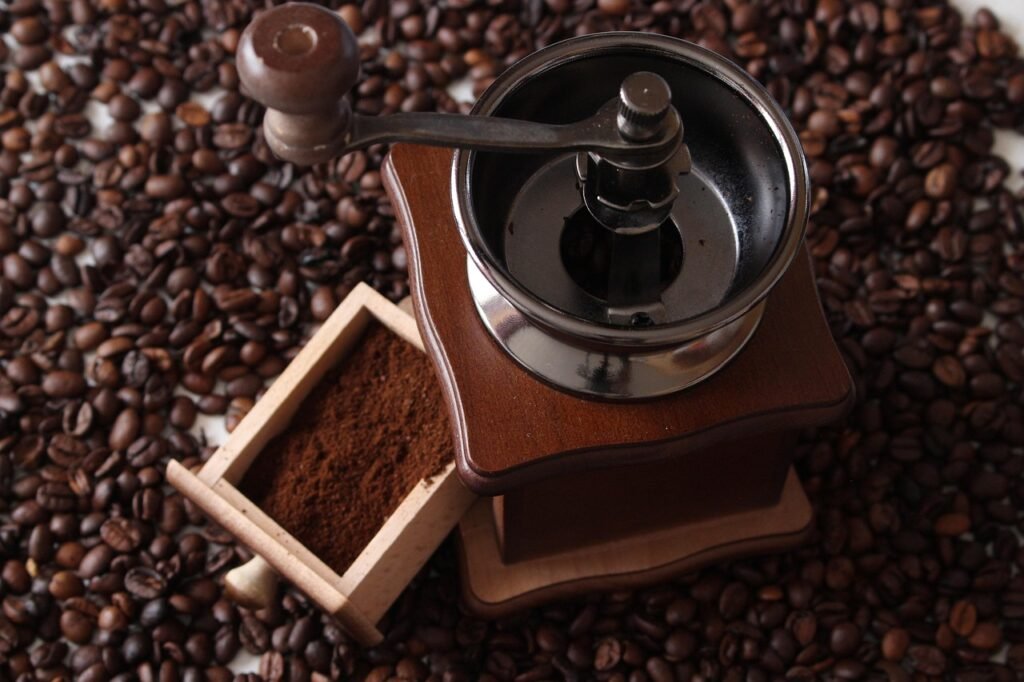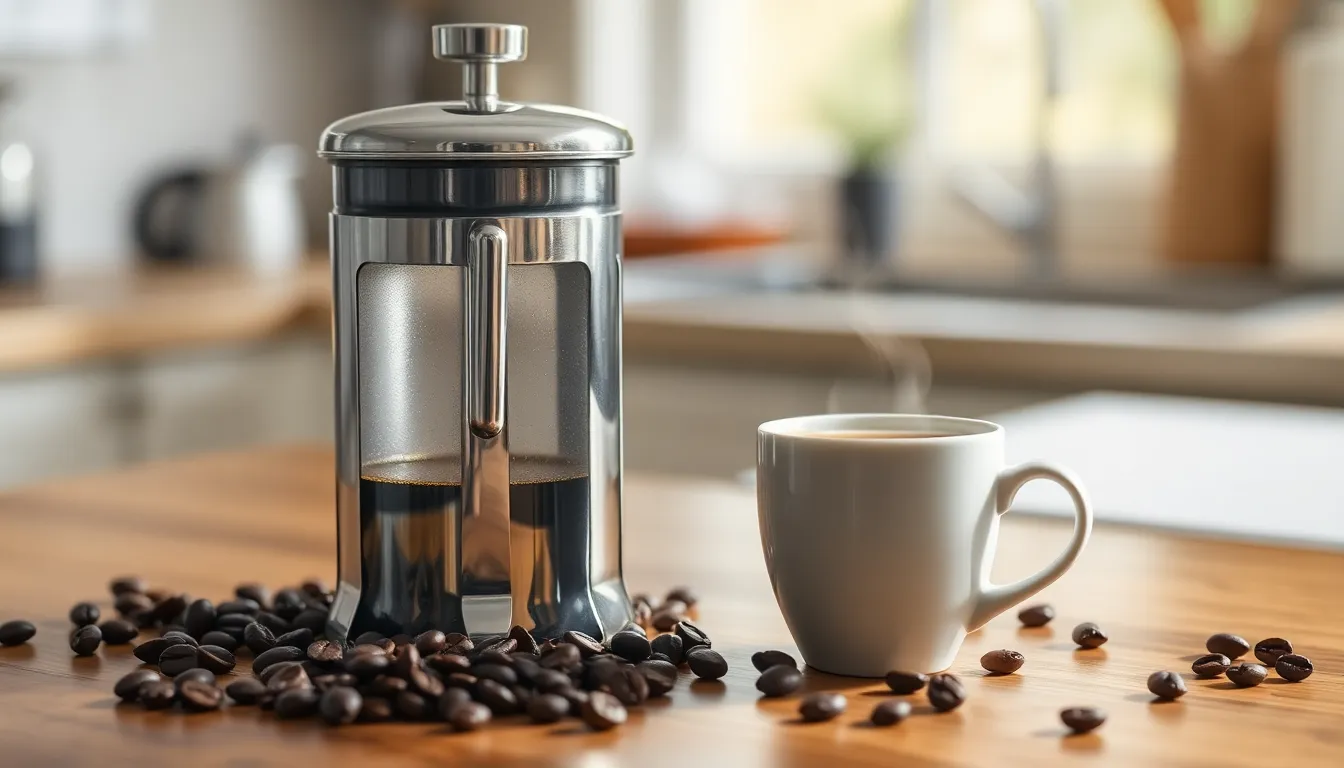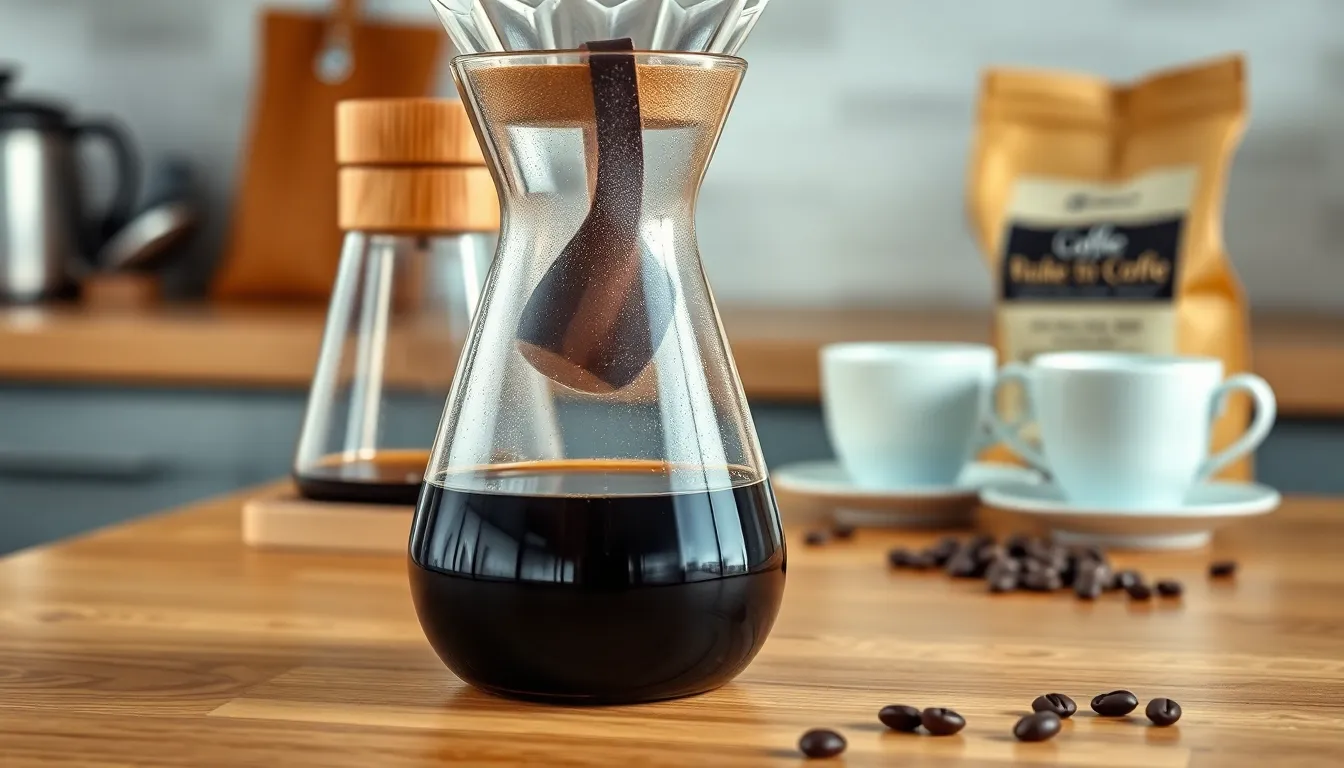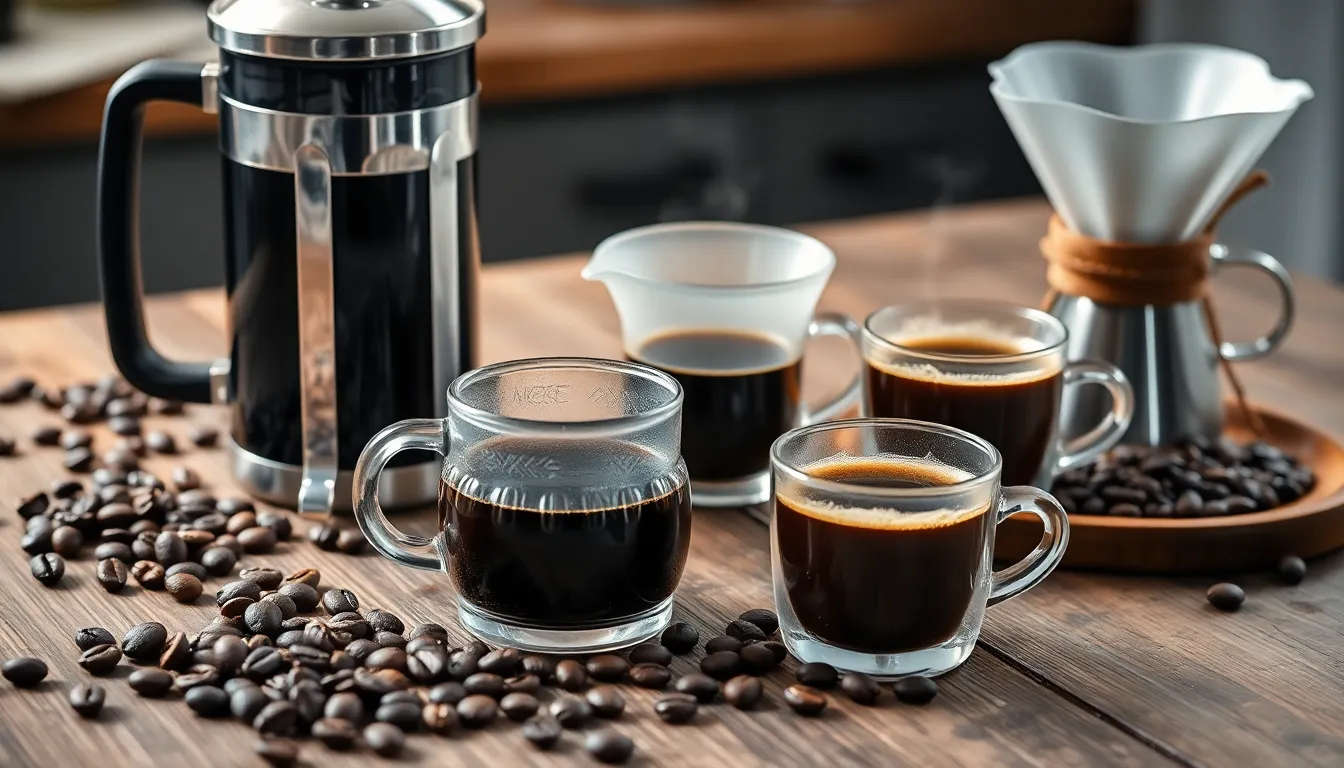
Community-Building Strategies for Independent Coffee Shops (That Actually Work)
Introduction Independent cafes win when they feel like the neighborhood’s living room and operate with the discipline of a great kitchen. Below is a quick

For true coffee enthusiasts, choosing between the French press vs Chemex can feel like selecting between two philosophies of brewing. Both coffee makers promise an aromatic, flavorful cup, yet their methods and results differ dramatically. The French press favors immersion and richness, while the Chemex emphasizes clarity and refinement. Whether you crave a full-bodied cup of coffee or a light, crisp pour-over, each brewing method offers a unique ritual and reward.
Health-conscious drinkers often appreciate that both methods avoid unnecessary additives and deliver a purer coffee flavor than commercial drip systems. As more consumers value transparency in sourcing and roasting, learning how Chemex vs French press brewing shapes taste can enhance your daily ritual and deepen your appreciation for craftsmanship.
The French press and Chemex offer distinct brewing experiences, appealing to various coffee preferences. The French press uses a steeping technique, allowing coffee grounds to soak in hot water. This method produces a full-bodied cup with rich flavors and aromas. Ground coffee remains in the brew, enhancing the taste but potentially adding a slight bitterness.
The Chemex employs a pour-over method, utilizing specially designed paper filters. These filters trap oils and fine particles, leading to a cleaner cup. The brewing process offers a smooth, bright flavor profile, showcasing high-quality beans. It highlights subtle tasting notes, making it a favorite among light roast enthusiasts.
Both methods emphasize quality ingredients. Equipment choice matters when brewing responsibly sourced beans like Equipoise Coffee’s Cavaliers Blend, Mexican Oaxaca, Colombian Supremo, Mexican La Laja Honey, and Ethiopian Yirgacheffe. These options provide balanced taste in every cup, aligning with the principles of small-batch roasting and craftsmanship. Each brewing method reflects its unique character, allowing coffee lovers to explore their ideal flavor profiles.

The French press offers a full-bodied coffee experience. This method emphasizes rich flavors and aromas, appealing to those who appreciate an intense coffee profile.
Invented in the 19th century and refined in the early 20th, the French press—also known as a press pot—became popular for its simplicity and control. Its stainless steel or glass carafe design, paired with a metal plunger, offers hands-on engagement that many coffee lovers find deeply satisfying.
Brewing with a French press involves steeping coarse coffee grounds in hot water. Typically, a coffee-to-water ratio of 1:15 yields optimal results. After four minutes, the user presses the plunger down, separating grounds from the brewed coffee. This method enhances the extraction of flavors from high-quality beans, making it ideal for blends like the Mexican Oaxaca or Ethiopian Yirgacheffe.
The resulting cup of joe from a French press is bold, aromatic, and layered. Expect a thicker texture with low acidity and a pleasant grit that emphasizes natural sweetness. Dark roasts and single-origin blends like Mexican La Laja Honey or Colombian Supremo express their full character through this method. For those who value intensity and warmth, the French press vs Chemex debate often ends here—with loyalty to the richness only an immersion brew can deliver.

The Chemex brewing method shines for its elegant design and clean taste. This pour-over technique elevates coffee by focusing on the quality of high-quality beans, showcasing their unique characteristics without overpowering bitterness.
Created in 1941 by Dr. Peter J. Schlumbohm, the Chemex was inspired by laboratory equipment. Its iconic glass carafe and wooden collar combine function with artistry, earning it a place in museums and modern kitchens alike. The Chemex uses thick paper filters that remove sediment and excess coffee oils, resulting in a crystal-clear brew with elevated aromatic notes.
Brewing coffee with a Chemex involves a precise pour-over method. First, it requires high-quality beans, typically coarsely ground, to extract optimal flavors. Next, water should be heated to around 200°F (93°C) for ideal extraction without scorching the grounds. Using a coffee-to-water ratio of approximately 1:15 enhances the balance. Pouring water in a slow, circular motion allows for even saturation, resulting in a bright and flavorful cup. This process suits premium coffees like Colombian Supremo or Ethiopian Yirgacheffe from Equipoise Coffee, emphasizing clarity and smoothness.
The Chemex brewing method produces a distinct flavor profile recognized for its clarity and brightness. The specially designed paper filters trap oils and fine particles, leading to a clean taste that showcases the unique notes of high-quality beans. Each cup reflects the intricacies of the coffee used. Darker roasts reveal deeper chocolate tones, while light roasts expose floral or fruity nuances. For an optimal experience, blends like Mexican La Laja Honey or the Cavaliers Blend from Equipoise Coffee provide balance and complexity, inviting drinkers to savor every sip.

Both the French press and Chemex offer unique coffee brewing experiences, reflecting distinct preferences in flavor and technique.
French press brewing involves simplicity. Adding coarsely ground coffee and hot water, steeping for about four minutes, then pressing the plunger separates grounds from brewed coffee. This method provides control over brewing time and temperature, catering to personal tastes.
Chemex also favors ease, relying on a pour-over technique. This requires users to slowly pour hot water in a circular motion over coffee grounds. While both methods are accessible, the Chemex may need a more precise pour to achieve its signature clarity.
Cleaning the French press involves disassembling the plunger and rinsing components. This process can be straightforward but sometimes requires thorough scrubbing to remove residual oils. In contrast, Chemex cleaning involves rinsing the glass body and replacing paper filters. Chemex’s design minimizes mess, as filters trap oils and particles. While both methods require maintenance, the Chemex often proves less time-consuming when it comes to daily cleaning.
When exploring coffee options, the cost varies. French presses are widely available at affordable prices, making them accessible for many coffee lovers. Chemex, while a bit pricier, emphasizes craftsmanship and design, appealing to those seeking aesthetics alongside functionality.
Whether you choose the French press or the Chemex, both deliver an elevated coffee brewing experience. The French press captures boldness and body, ideal for those who enjoy a hearty cup of coffee, while the Chemex offers refinement and precision for those who prefer clarity and complexity.
Exploring Chemex vs French press techniques lets coffee enthusiasts connect more deeply with their brew, from the aroma of freshly ground beans to the satisfying pour into a warm cup. Using responsibly sourced beans like Equipoise Coffee’s small-batch roasts makes each brew not just a beverage but a ritual rooted in quality and intention.
Whether your morning begins with the tactile press of the plunger or the gentle pour of hot water through a filter, each brewing method offers the chance to savor craftsmanship, aroma, and the timeless joy of great coffee at home.
Both methods serve unique preferences: the French press offers full-bodied flavors and aromas due to a steeping technique, while the Chemex provides a cleaner, smoother taste with a pour-over method that highlights the coffee’s clarity.
The French press uses coarsely ground coffee steeped in hot water, pressed after four minutes. In contrast, the Chemex requires a precise pour-over technique using special filters for a balanced extraction, showcasing the intricacies of high-quality beans.
The French press is ideal for premium blends, particularly those that benefit from bold flavors, like Mexican Oaxaca or Ethiopian Yirgacheffe, as it extracts rich aromas and oils during brewing.
The Chemex is perfect for light roast enthusiasts who appreciate clarity in taste. Its unique design and pour-over method result in a bright flavor profile, highlighting high-quality beans and their natural characteristics.
Yes, the French press is simpler to use, requiring just hot water and coarsely ground coffee. The Chemex demands precise pouring and timing, making it slightly more complex for beginners.
Cleaning a French press may require scrubbing to remove oils, while the Chemex is generally easier to maintain, as its design minimizes mess and is easier to rinse out.
French presses are widely accessible and affordable, while Chemex coffee makers emphasize craftsmanship and design, typically priced higher but appealing to those who value aesthetics in their brewing equipment.

Introduction Independent cafes win when they feel like the neighborhood’s living room and operate with the discipline of a great kitchen. Below is a quick

Discover how top specialty coffee brands create lasting loyalty through storytelling, sourcing, and community connection. Real tips from 6 industry experts.

Discover the ultimate showdown between two beloved coffee brewing methods: the French press and Chemex. Explore how each technique caters to distinct palates, with the French press delivering bold flavors and the Chemex presenting a bright, clean taste.

Unlock the secrets to brewing the perfect cup of coffee with our comprehensive guide on using a coffee scale. Discover how precise measurements enhance flavor and consistency while eliminating bitterness.

Discover how water temperature plays a vital role in brewing the perfect cup of coffee. This article delves into the ideal temperature range of 195°F to 205°F for optimal flavor extraction, enhancing the enjoyment of high-quality beans.

Discover the world of curated specialty coffee bundles, perfect for enthusiasts seeking quality and craftsmanship. This article explores the benefits of ethically sourced, small-batch beans from brands like Equipoise Coffee, offering diverse flavor profiles that elevate your brewing experience.

Discover the art of manual brewing to elevate your coffee experience! This article explores various techniques like pour-over, French press, and AeroPress, revealing how they enhance flavor and your connection to every cup.

Discover how to balance productivity and rest with the perfect cup of coffee. This article explores the art of brewing high-quality coffee to enhance your work routine while promoting mindful breaks.

Transform your morning coffee ritual into a mindful experience! This article explores the importance of slowing down to appreciate high-quality beans, ethical sourcing, and small-batch roasting.